
Police remove barricades as the city is reopened at 00:00 on April 8. /Xinhua
Police remove barricades as the city is reopened at 00:00 on April 8. /Xinhua
Central China's city of Wuhan has been back to normal on Wednesday with its main intercity highways reopened and public transportation resumed.
Home to over 11 million people, the city was put on temporary lockdown on January 23.
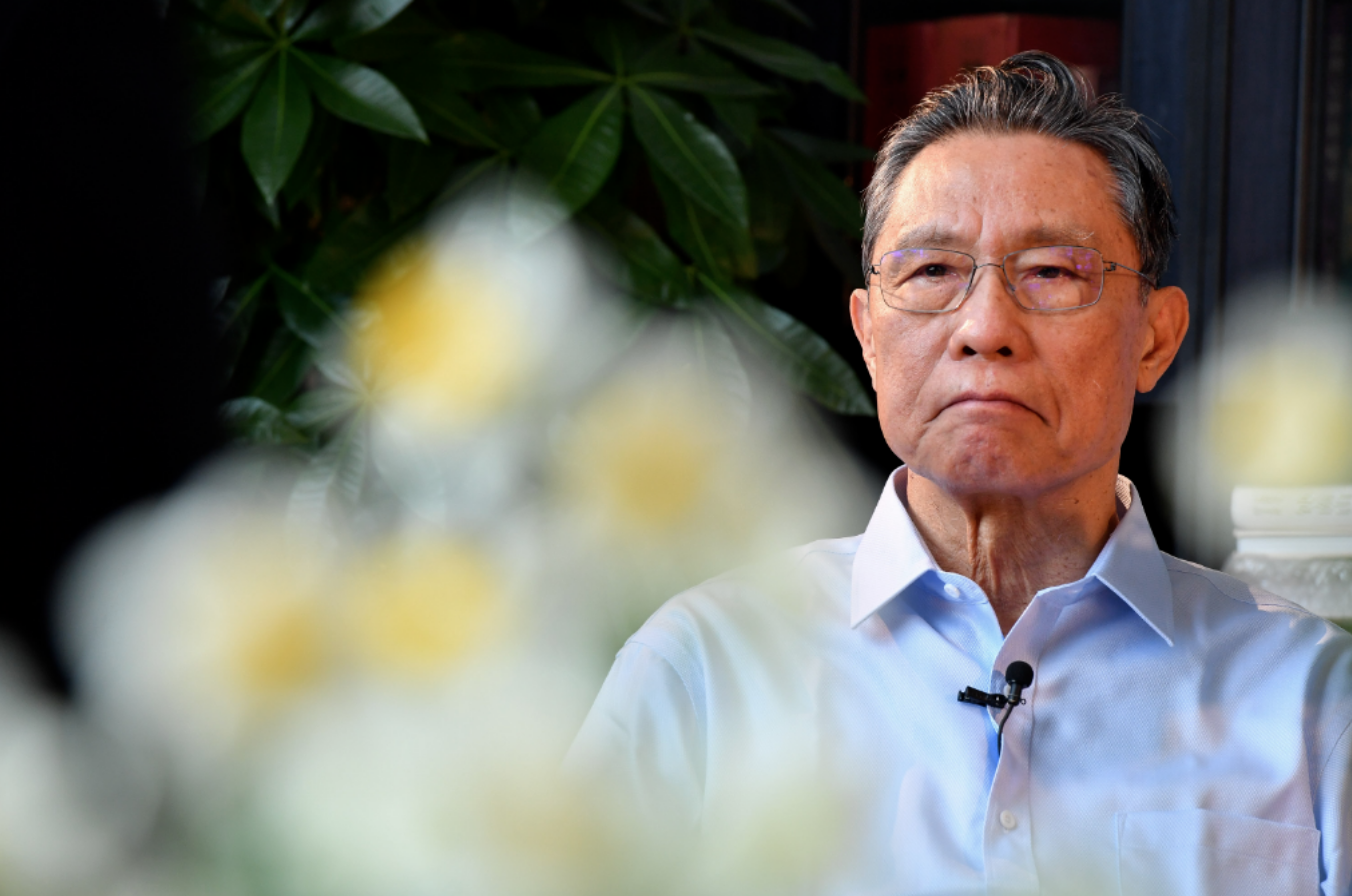
Zhong Nanshan, head of the COVID-19 panel of experts, during an interview on the pandemic. /Xinhua
Zhong Nanshan, head of the COVID-19 panel of experts, during an interview on the pandemic. /Xinhua
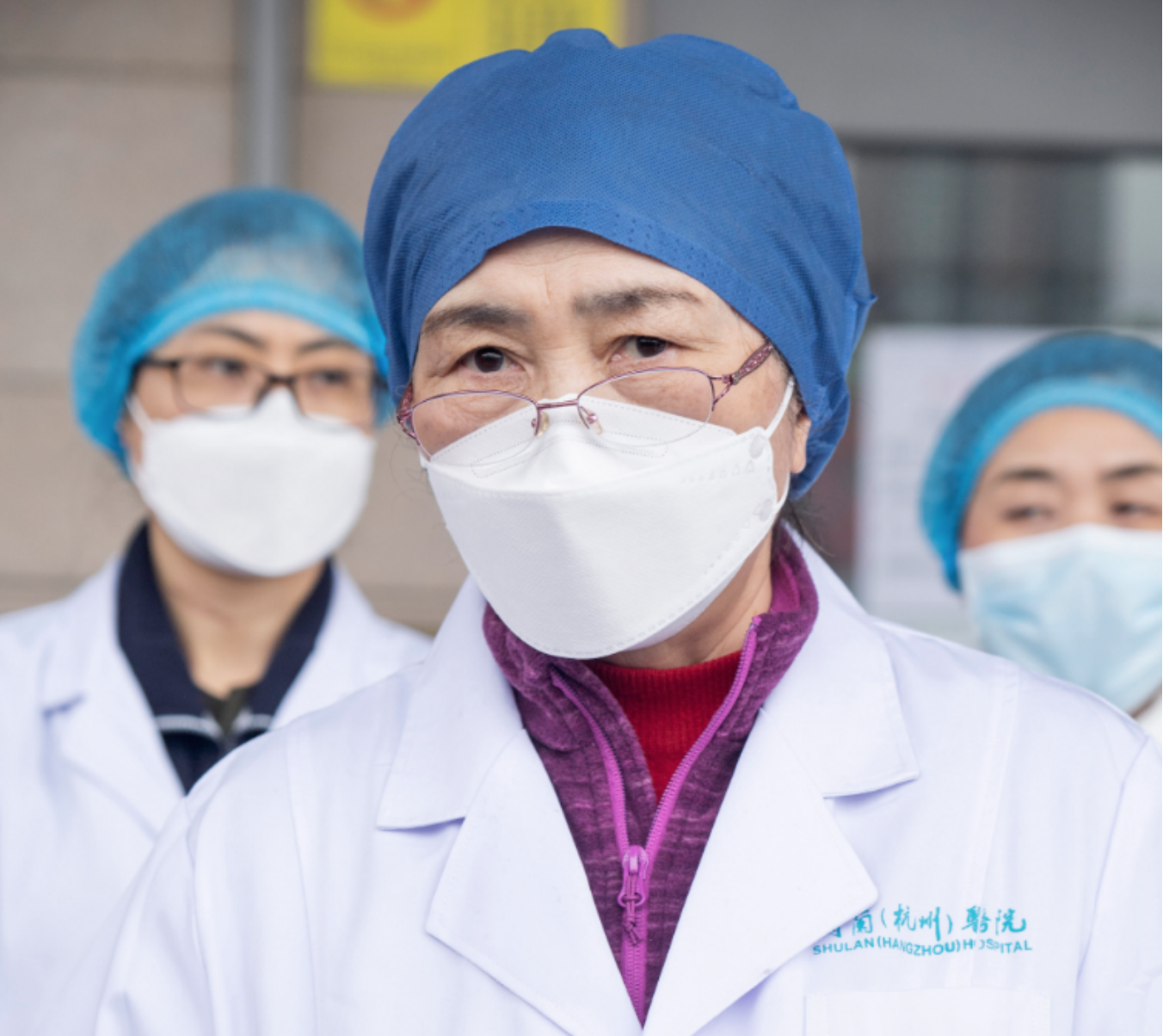
Li Lanjuan, academician of Chinese Academy of Engineering, explains therapy of a confirmed COVID-19 case. /Xinhua
Li Lanjuan, academician of Chinese Academy of Engineering, explains therapy of a confirmed COVID-19 case. /Xinhua
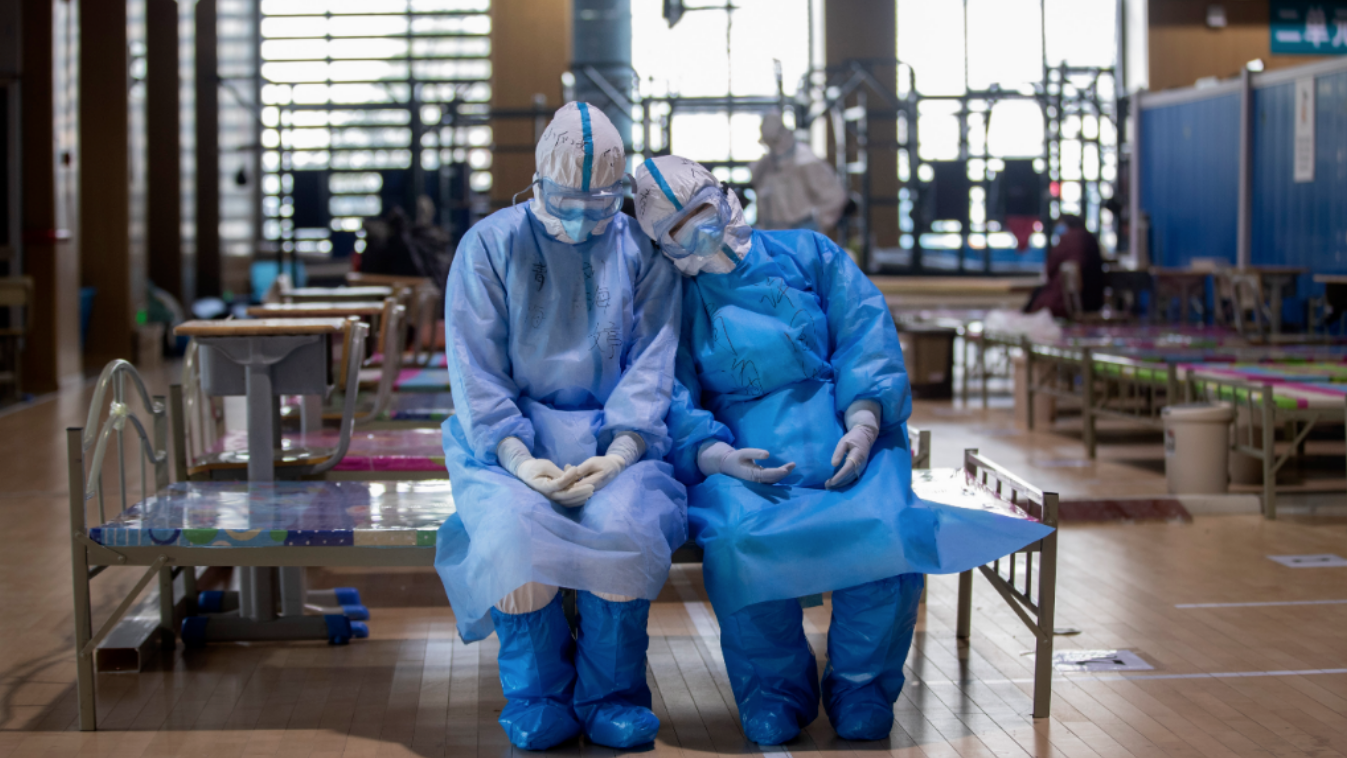
Doctors at a temporary venue-converted hospital in Wuhan rest, March 10. /Xinhua
Doctors at a temporary venue-converted hospital in Wuhan rest, March 10. /Xinhua
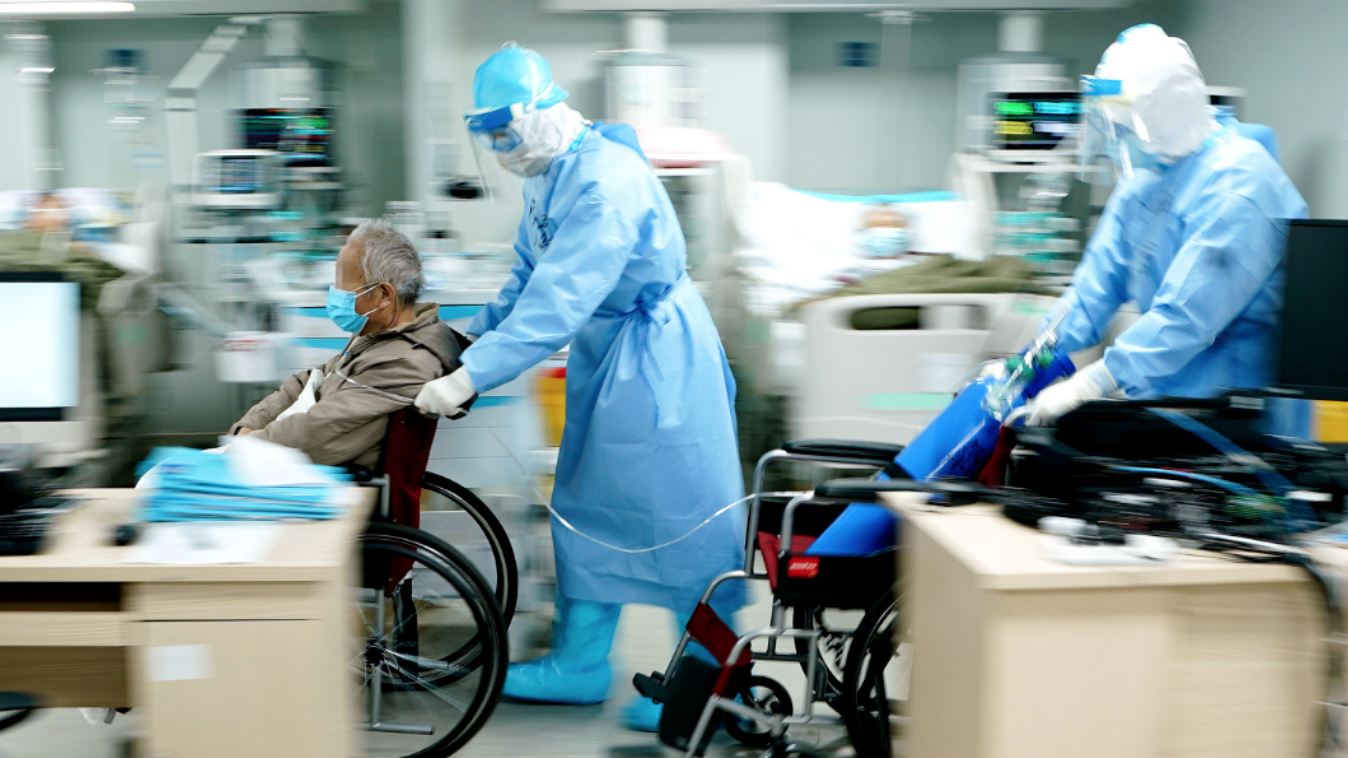
A doctor follows a patient with an oxygen cylinder on his way to a CT scan in Wuhan, March 20. /Xinhua
A doctor follows a patient with an oxygen cylinder on his way to a CT scan in Wuhan, March 20. /Xinhua
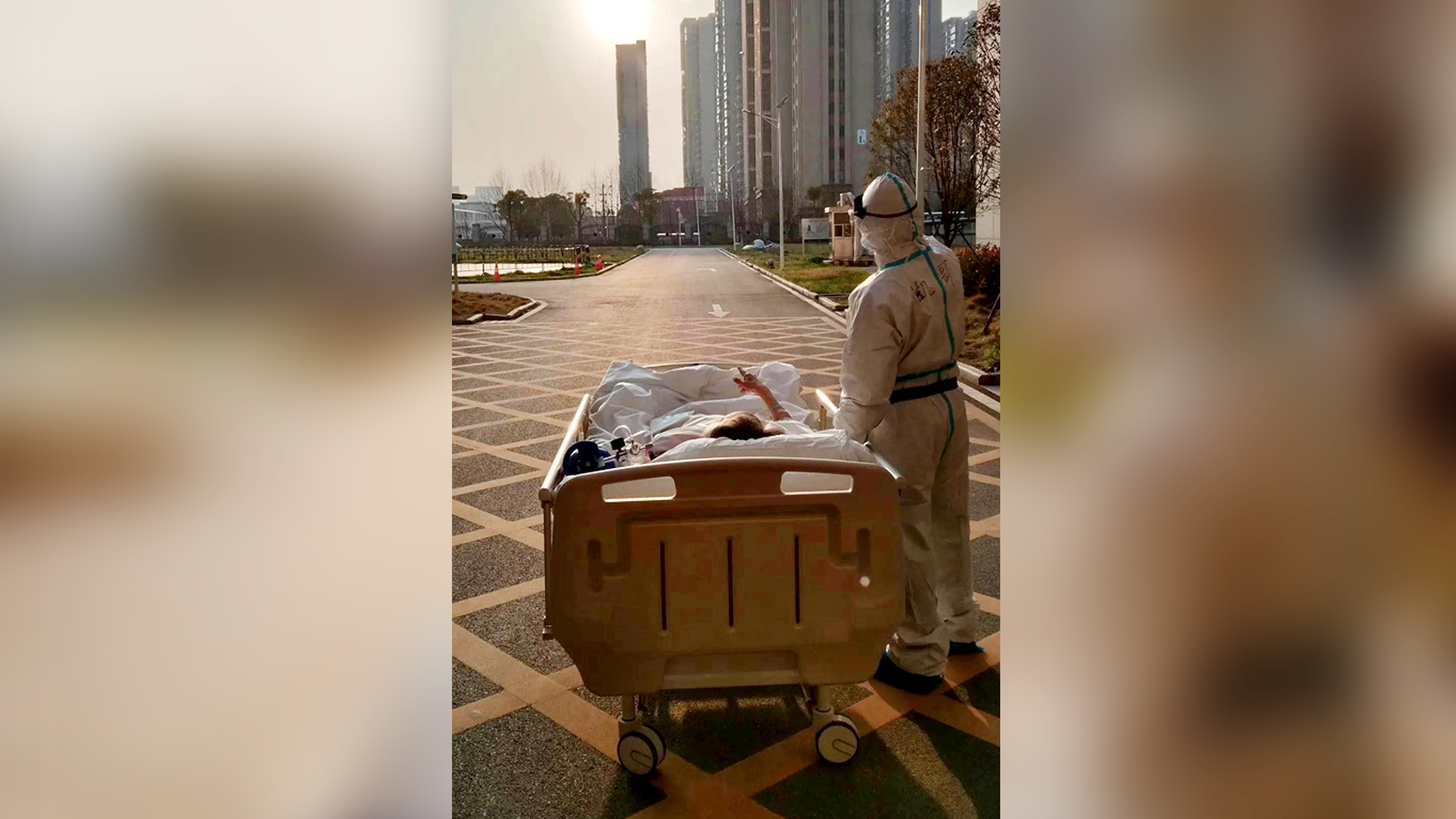
A doctor sees sunset with a patient on their way back from a CT scan in Wuhan, March 5. /Xinhua
A doctor sees sunset with a patient on their way back from a CT scan in Wuhan, March 5. /Xinhua
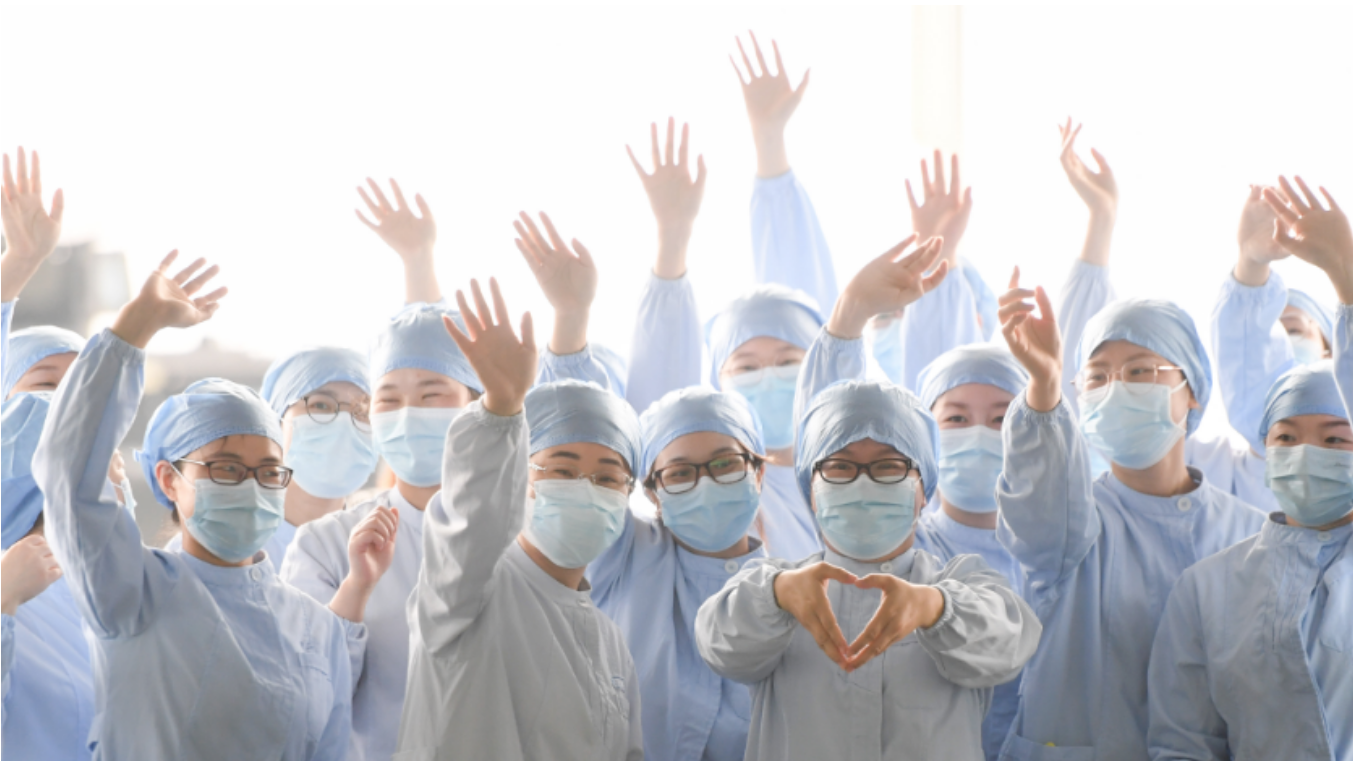
Wuhan medics send off a medic team from Guangdong Province at Wuhan Tianhe International Airport in Wuhan on March 23. They wave and make a heart gesture. /Xinhua
Wuhan medics send off a medic team from Guangdong Province at Wuhan Tianhe International Airport in Wuhan on March 23. They wave and make a heart gesture. /Xinhua
Over the past two months, over 330 medical teams made up to over 40,000 doctors and nurses from across the country were sent to Wuhan to back local medics. National medical professionals Zhong Nanshan and Li Lanjuan hurried to the front line to give scientific medical advice for confirmed cases, and an ad hoc professional panel was organized and released treatment protocols to the world with a continuous update.
Emergency specialty field hospitals – Huoshenshan Hospital and Leishenshan Hospital – were built just in 10 days, offering 2,600 more beds. A total of 16 public venues were also converted within one month into temporary hospitals to fill in a shortage of hospital beds, offering over 60,000 additional beds.
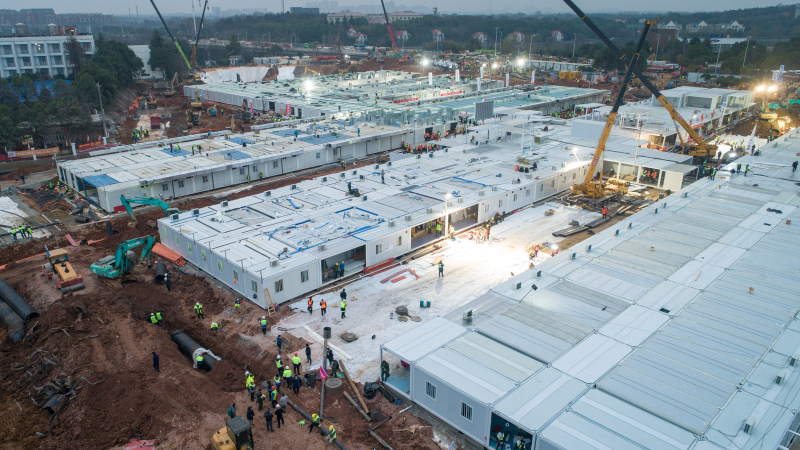
Workers are building Huoshenshan Hospital in Wuhan on February 1. It took 10 days only to finish the building. /Xinhua
Workers are building Huoshenshan Hospital in Wuhan on February 1. It took 10 days only to finish the building. /Xinhua
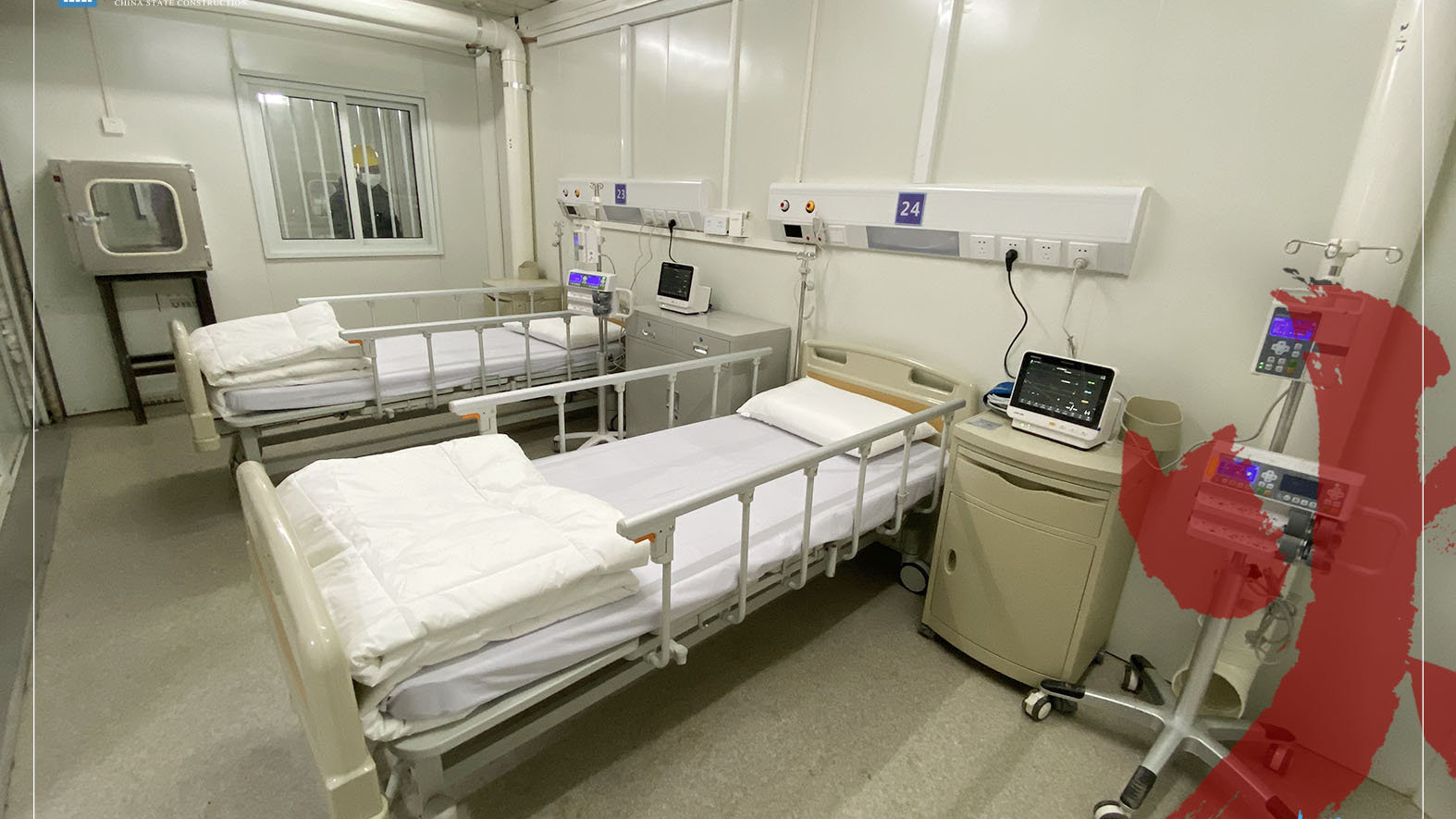
The interior of Huoshenshan Hospital. /China Construction
The interior of Huoshenshan Hospital. /China Construction
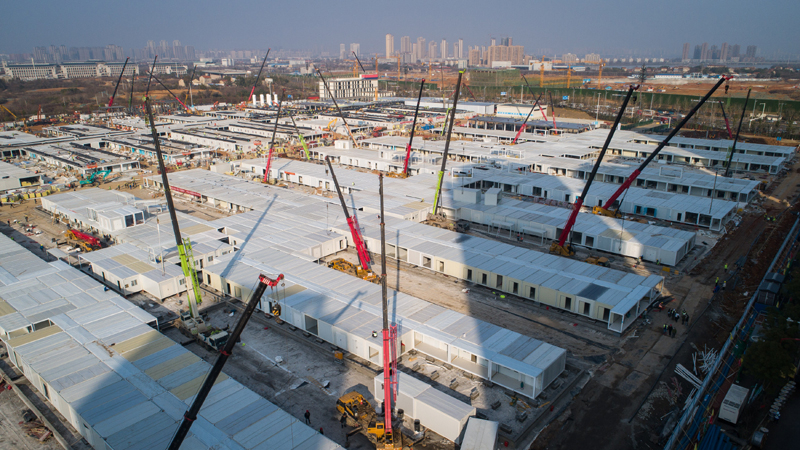
Works are building Leishenshan Hospital for receiving confirmed COVID-19 patients on February 4 and the hospital was put into use on February 8. /Xinhua
Works are building Leishenshan Hospital for receiving confirmed COVID-19 patients on February 4 and the hospital was put into use on February 8. /Xinhua
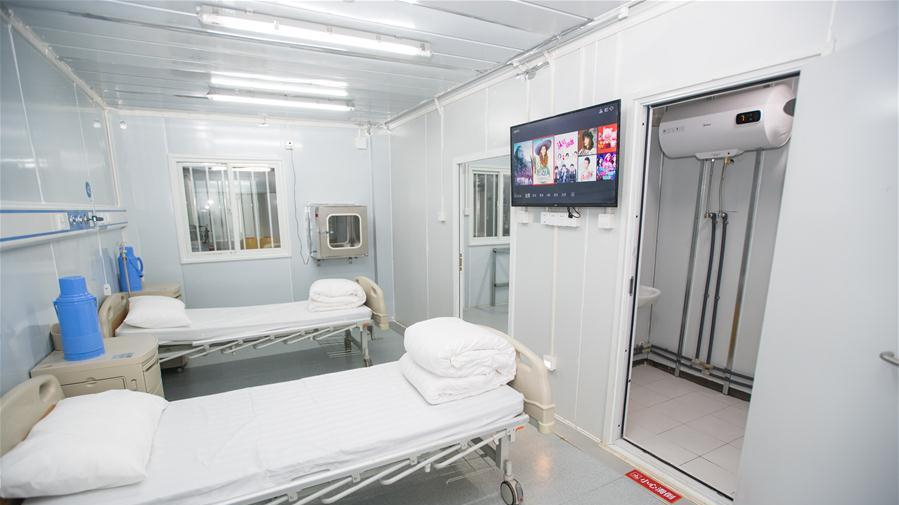
The interior of Leishenshan Hospital /Xinhua
The interior of Leishenshan Hospital /Xinhua
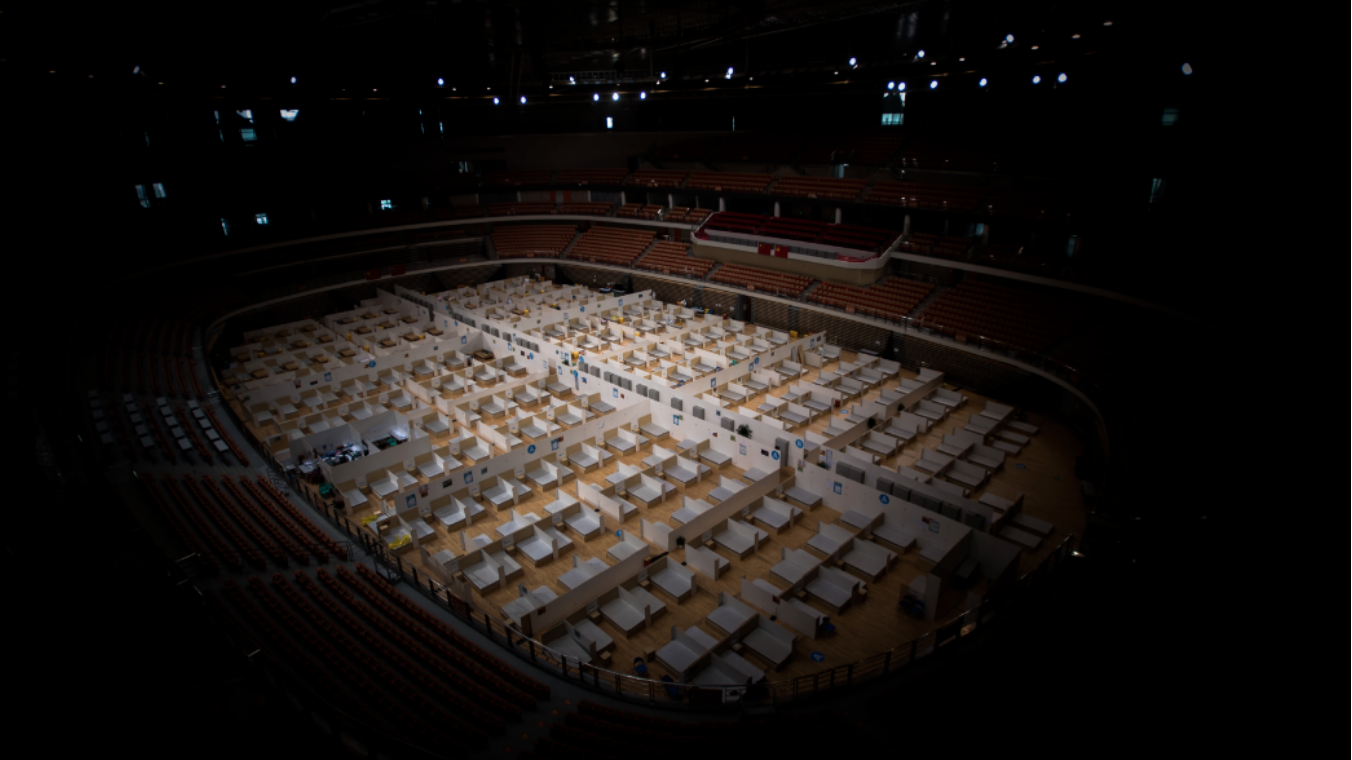
The temporary hospital converted from Wuhan Sports Center is shut down on March 8 after all patients are cured. /Xinhua
The temporary hospital converted from Wuhan Sports Center is shut down on March 8 after all patients are cured. /Xinhua
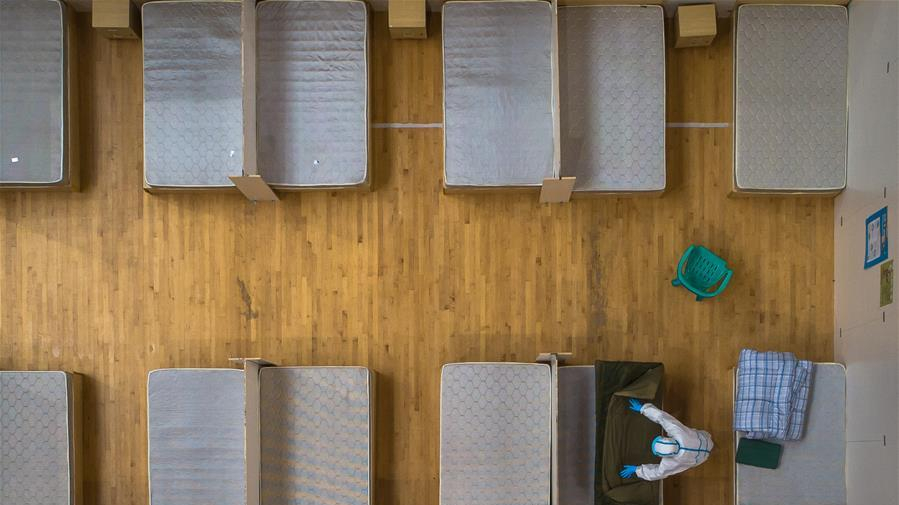
A worker is disinfecting the venue after its shutdown on March 8. /Xinhua
A worker is disinfecting the venue after its shutdown on March 8. /Xinhua
"We've never used the temporary hospitals converted from existing public venues. This is a milestone in the country's public health," Wang Chen, professor in respiratory and critical care medicine, said.
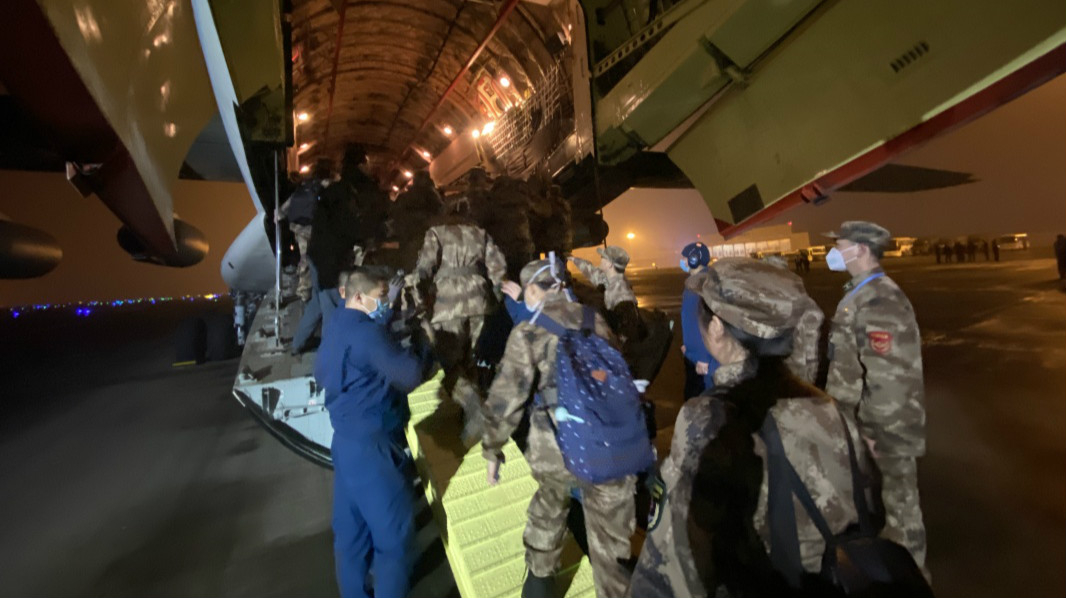
More than 150 medics from the Army Medical University set off for Wuhan to join local medical teams, January 24. /China Military
More than 150 medics from the Army Medical University set off for Wuhan to join local medical teams, January 24. /China Military
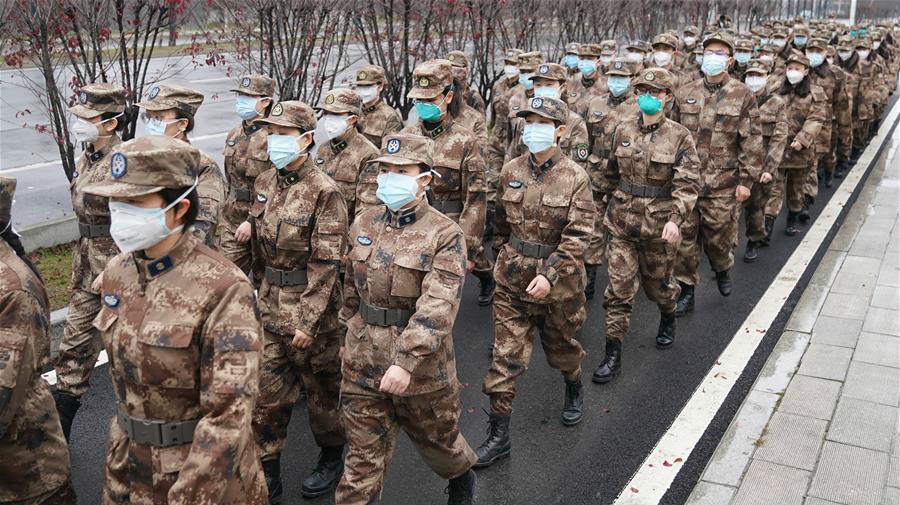
The medics from the Army Medical University join Jinyintan Hospital in Wuhan on January 26. /China Military
The medics from the Army Medical University join Jinyintan Hospital in Wuhan on January 26. /China Military
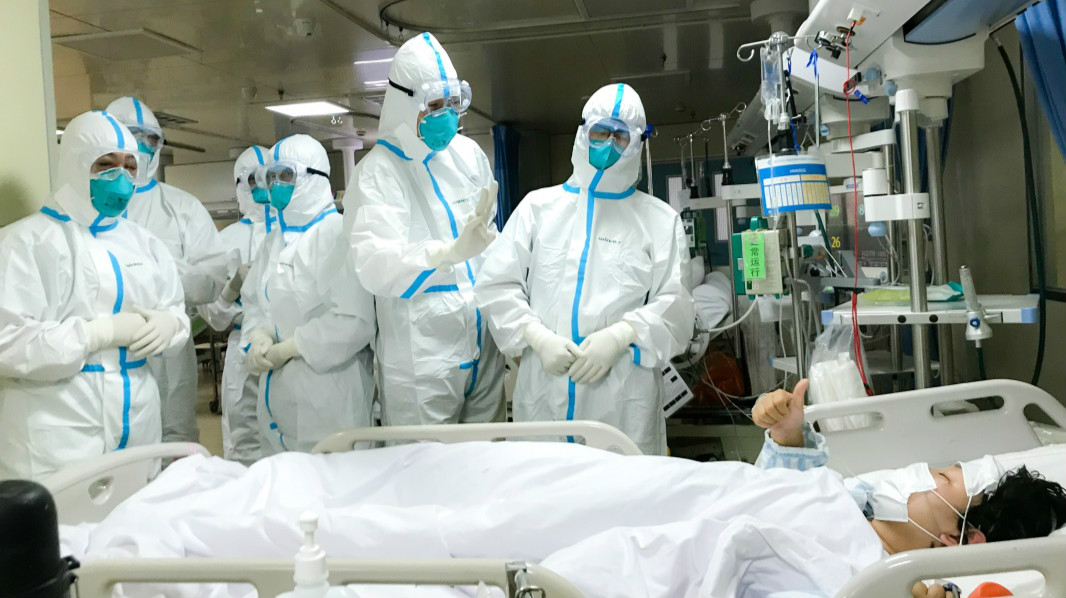
A patient makes a gesture to medics from the Second Military Medical University in Wuhan, January 27. /China Military
A patient makes a gesture to medics from the Second Military Medical University in Wuhan, January 27. /China Military
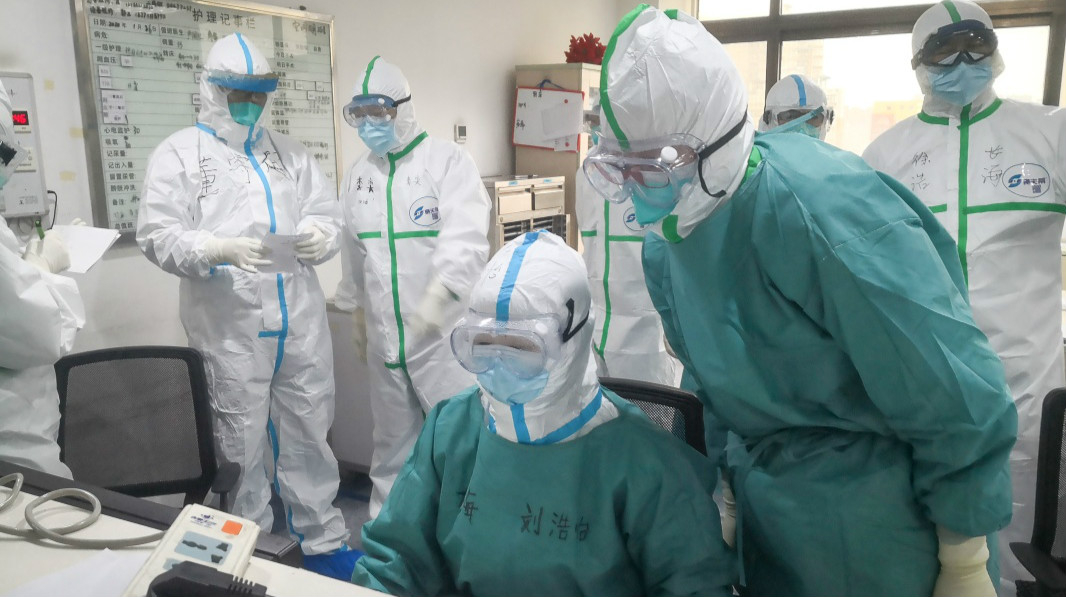
Medics from the Second Military Medical University are writing doctor's advice for patients in Wuhan, January 27. /China Military
Medics from the Second Military Medical University are writing doctor's advice for patients in Wuhan, January 27. /China Military
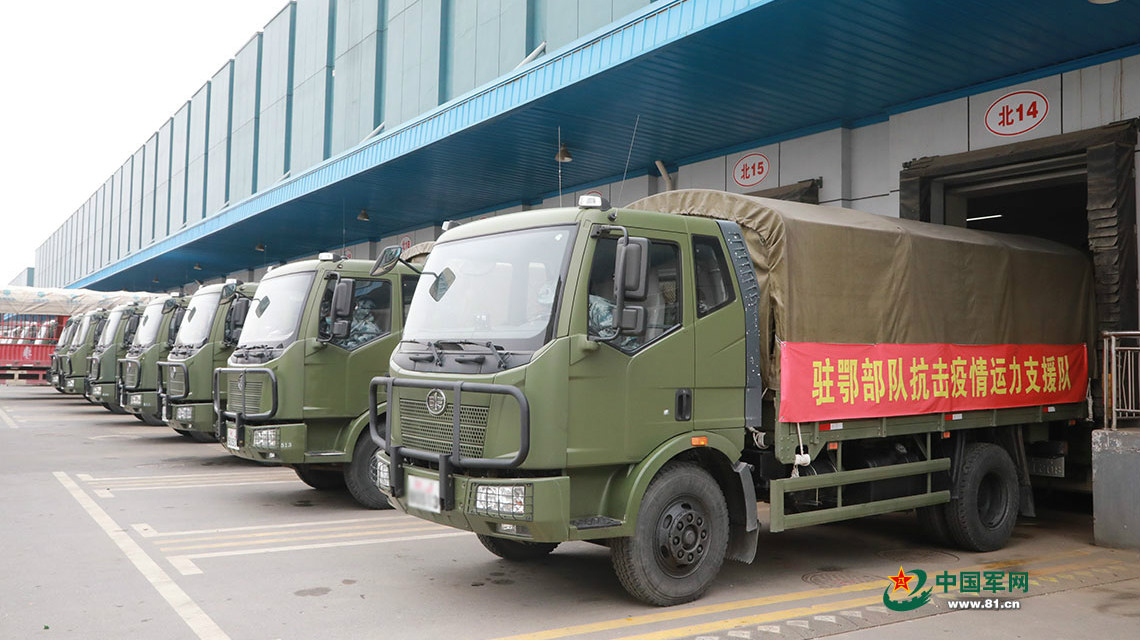
The troops in Hubei Province put into use 50 trucks to transport materials. /China Military
The troops in Hubei Province put into use 50 trucks to transport materials. /China Military
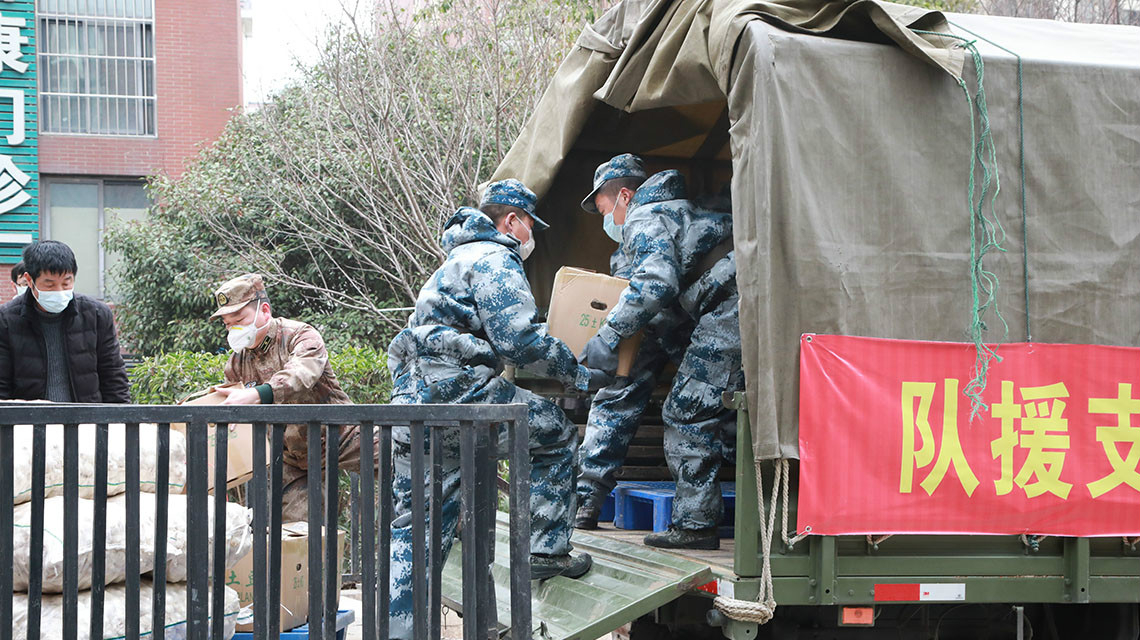
The troops in Hubei Province load materials and transport them to supermarkets in Wuhan, February 1. /China Military
The troops in Hubei Province load materials and transport them to supermarkets in Wuhan, February 1. /China Military
Soldiers also took part in the battle against the disease with a high velocity. On the eve of the Spring Festival, the first medical team from the Chinese People's Liberation Army arrived in Wuhan and joined in local medical workers. Over 10,000 from the army supported local medics in total. To meet the increasing demand, the army sent 400,000 medical masks and 8,000 hazmat suits to Wuhan.
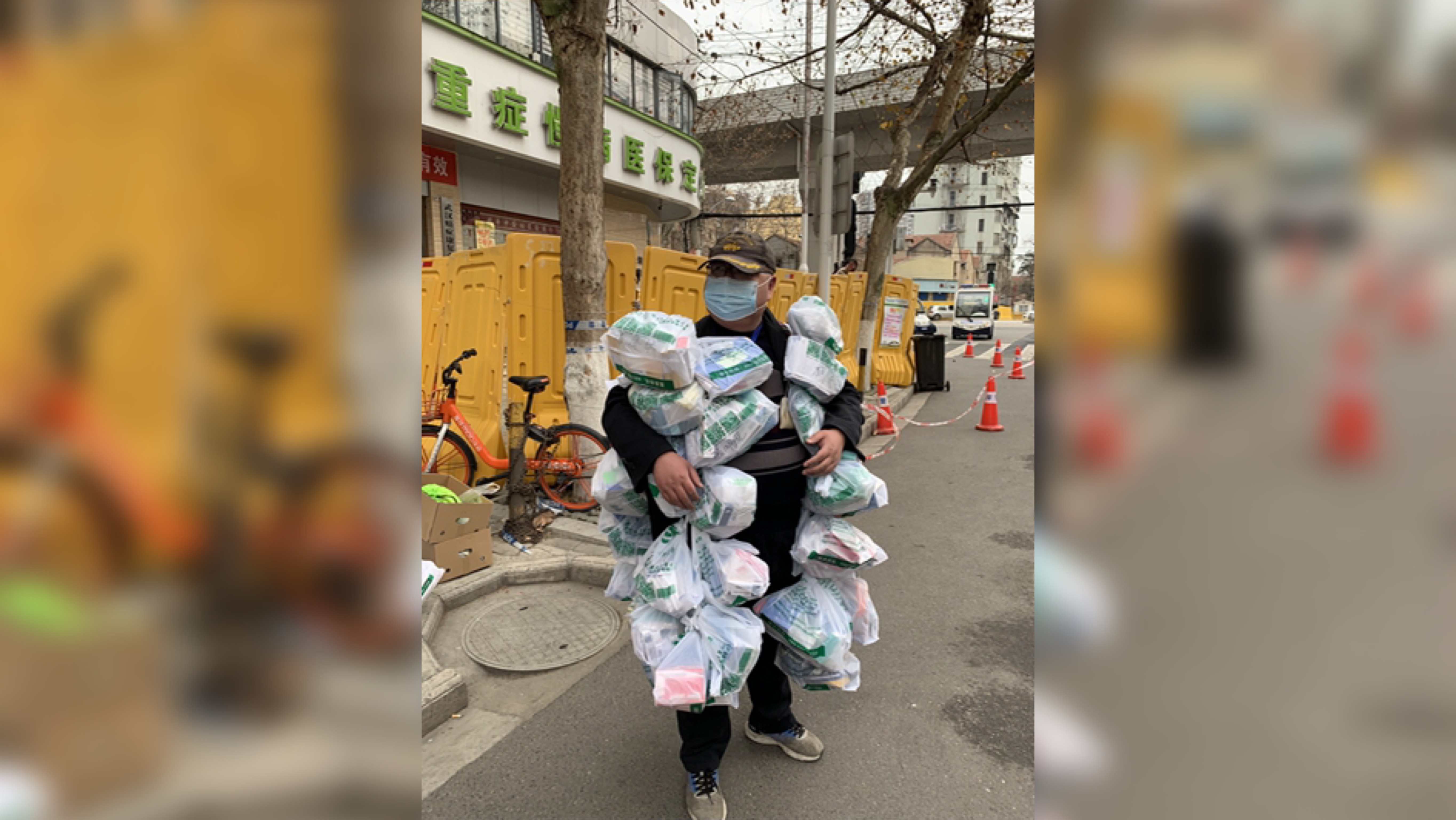
A community worker in Wuhan's Jiang'an District carries 100 pieces of medicine for residents, February 24. /Xinhua
A community worker in Wuhan's Jiang'an District carries 100 pieces of medicine for residents, February 24. /Xinhua
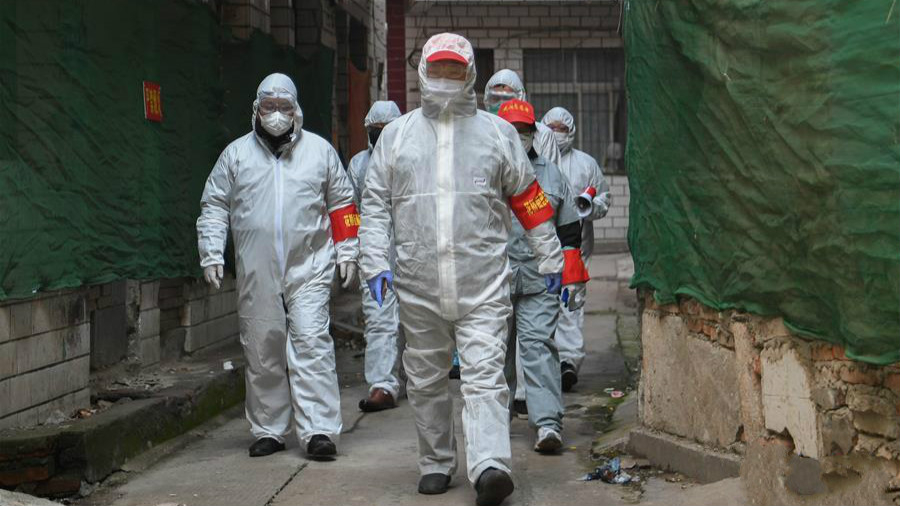
Community workers and volunteers carry out a health check in Jiang'an District, Wuhan, February 9. /Xinhua
Community workers and volunteers carry out a health check in Jiang'an District, Wuhan, February 9. /Xinhua
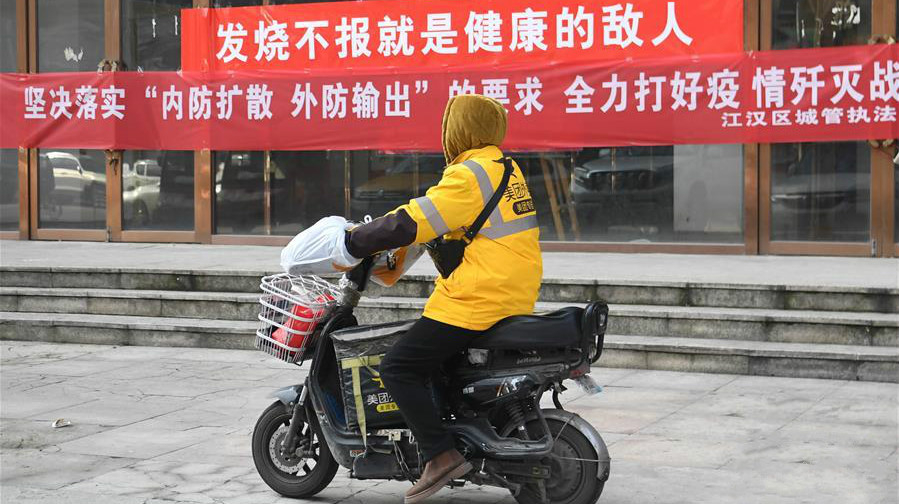
A deliveryman delivers parcels to a residential community in Jianghan District in Wuhan, February 9. /Xinhua
A deliveryman delivers parcels to a residential community in Jianghan District in Wuhan, February 9. /Xinhua
On February 16, a three-day check was started in communities citywide, aiming to transport all confirmed patients to hospitals, conduct a test on all suspected cases, quarantine all direct contacts and ensure a closed-off management at community.
Gui Xiaomei, a neighborhood director from Qingshan District in Wuhan, said she had been working round the clock to help 5,235 households each day.
Over the past two months, people in Wuhan were advised to stay home and not to gather. During the Spring Festival, people had to send greetings through phones instead of visiting relatives or friends.
"This was a memorable Spring Festival. In each corner of the city, people defend their homeland with the same hope," Chen Ying told Xinhua, explaining how people were united at this moment to fight against the pandemic.
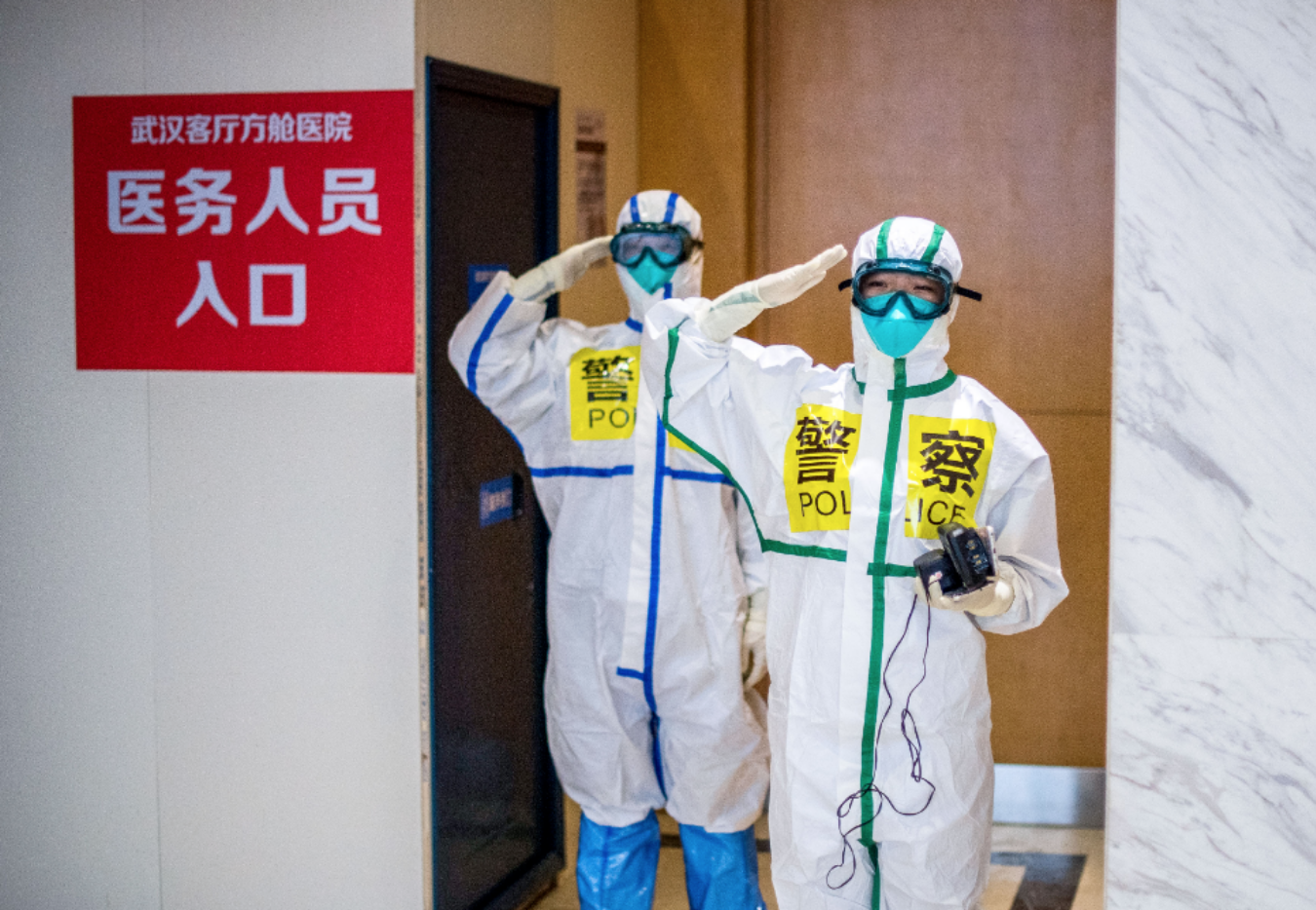
Police officers salute before entering a venue-converted temporary hospital in Wuhan, February 25, 2020. /Xinhua
Police officers salute before entering a venue-converted temporary hospital in Wuhan, February 25, 2020. /Xinhua
Over 63,000 police officers together with 56,000 assistant policemen have been on duty to ensure order and safety in the city.
People from all walks of life and the international community lent a helping hand to the city. Local restaurants and cafes volunteered to offer meals and coffee to medics while residents and deliverymen helped transportation of goods. People outside of the city collected medical masks and equipment that were in shortage because of huge demand. According to Hubei Province Red Cross Society, over 1.7 billion yuan worth of supplies were received as of April 4.
The country flew its national flag at half-mast on April 4, this year's Qingming Festival (Tomb Sweeping Day) with all nationals mourning for the deceased who lost their lives in the fight against the pandemic.
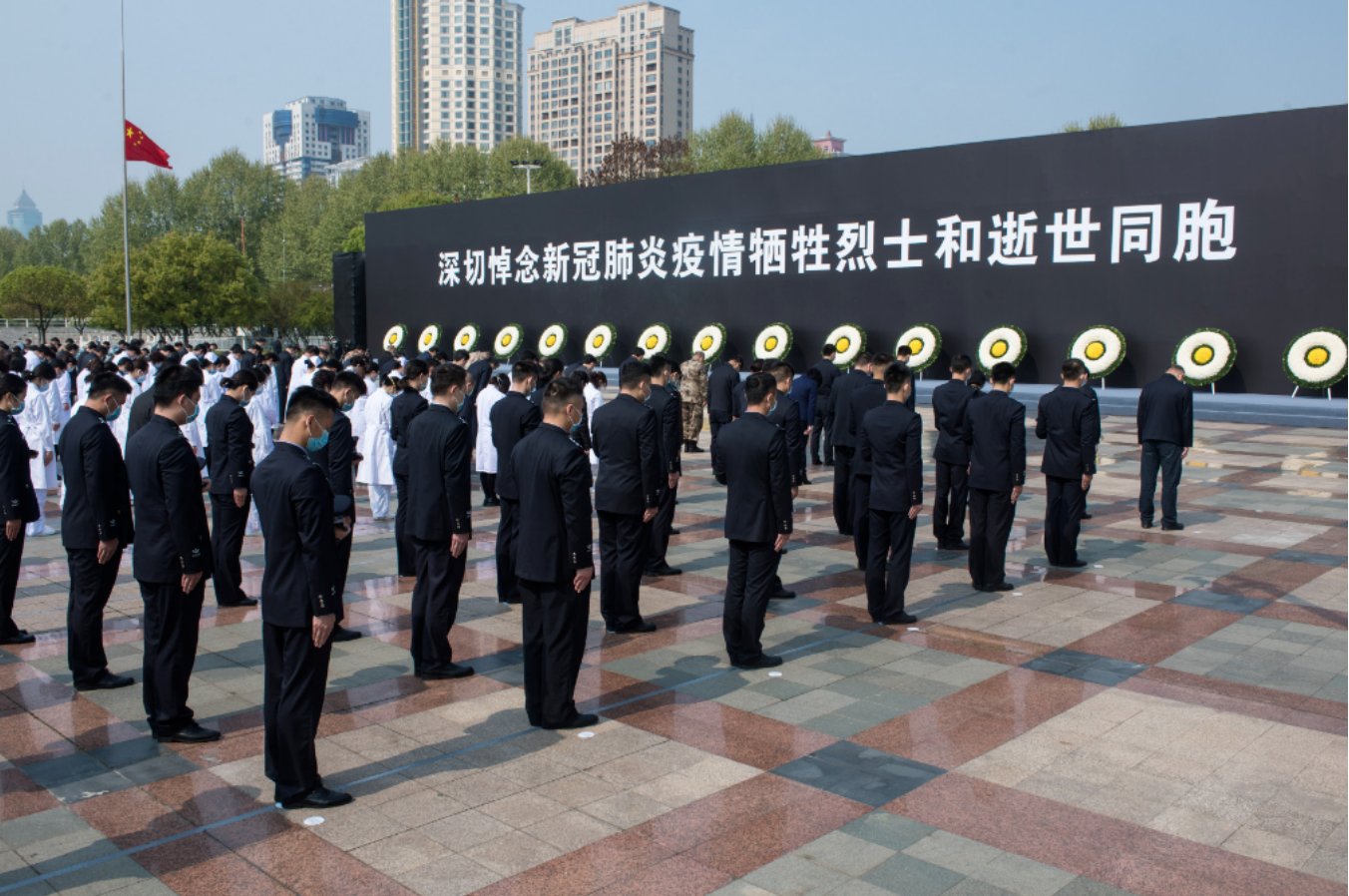
People mourn for the deceased in the fight against COVID-19 on Yiyuan Square in Wuhan, April 4. /Xinhua
People mourn for the deceased in the fight against COVID-19 on Yiyuan Square in Wuhan, April 4. /Xinhua
"People in Wuhan made a huge sacrifice. Each of the deceased should be remembered," a support doctor said in the memorial service held on April 4.
According to Hubei's health authority, there were no reported confirmed cases on April 7. The central transportation hub is back to normal on April 8 with an estimated 55,000 people leaving Wuhan by train and the rate of operation of business has reached 97.2 percent.